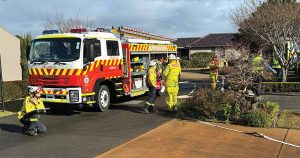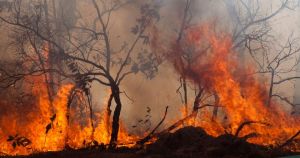By Lachlan Turner
Sometimes referred to as “Honey Flower”, the Mountain Devil (Lambertia Formosa), gained its more common name from the shape of the seed pod which is said to resemble the head of a “devil”.
This common name gained popularity due to the seed pod being incorporated into a tourist souveneir in the form of small doll-like figures associated with the Blue Mountains of NSW during the early to mid 20th Century.
Lambertia Formosa is the only member of that species endemic to Eastern Australia. Its habitat distribution is mainly in the bushland areas around, and to the west of, Sydney as far as the Blue Mountains. All other members of this species are located in Western Australia.
This plant is readily located along most tracks in local bushland. It can be quite straggley in form when growing in less suitable positions as it does like protection from the sun as well as good soil in which to grow to its best condition. In more favourable growing conditions the plant can grow up to 2m high and around 2m wide, with flowers appearing a very bright red.
Leaves are approximately 50mm long ending in a sharp spike which can be quite painful if handled carelessly. The spikes protruding from the flower can also be quite sharp. In spite of its other name, (Honey Flower), which is gained from the flower’s ability to attract nectar feeding birds and insects, the flower can emit a pungent odour which can be detected when close to the flowers. Although it has a reasonable level of popularity, mainly due to the rich red colour of the flower, it is a plant that has been a challenge to propagate and grow for the home garden.




